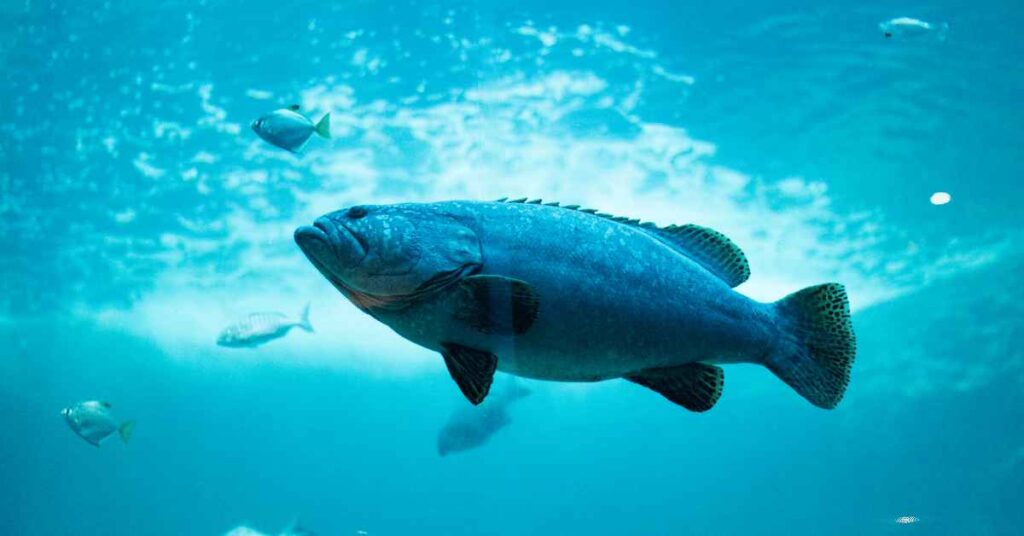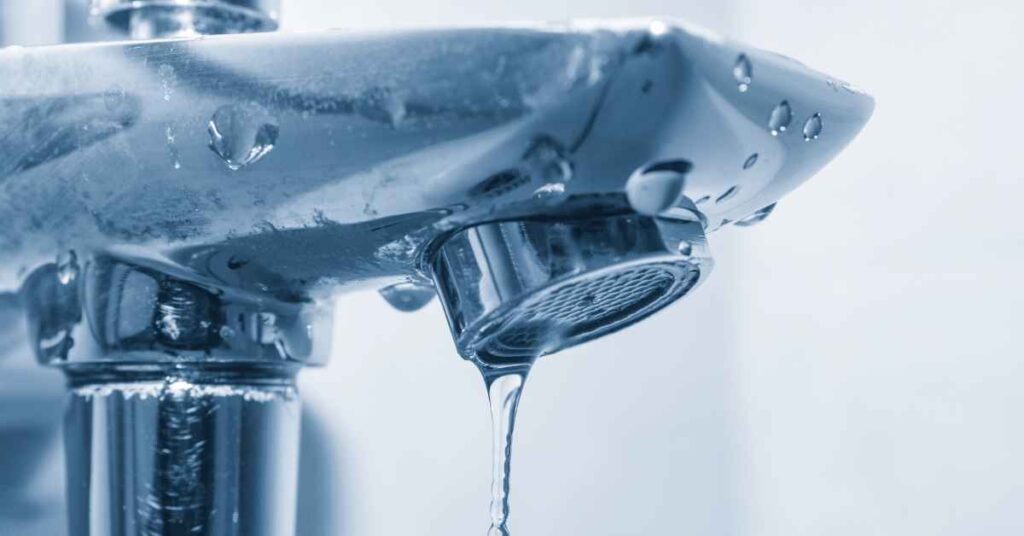This article will help you make tap water fish-safe without conditioner. As passionate aquarists, we know how important keeping aquatic pets healthy is. Chlorine, chloramine, heavy metals, and other toxins in tap water can kill fish. There are a few ways to make tap water safe for fish without using a water conditioner:
- Wait 24–48 hours before adding water to the fish tank. Water chlorine will evaporate.
- Boil the water for 15-20 minutes, then cool it before adding it to the fish tank. It will remove chlorine and any harmful bacteria.
- Use a reverse osmosis (RO) filter to purify the water before adding it to the fish tank.
Here Step by Step guide on How to Make Tap Water Safe for Fish Without Conditioner

Step 1: Let the Water Sit
One of the easiest and most efficient ways to make tap water safe for your fish is to let it sit for 24-48 hours. During this period, the chlorine and other volatile chemicals will evaporate, leaving behind safe water for your fish. However, this method is not recommended for removing chloramine as it is more stable and will not fade.
Step 2: Boiling the Water
Boiling tap water is another effective way of making it safe for your fish. Boiling removes chlorine, chloramine, and other harmful substances by breaking down their molecular bonds. Let the water cool before adding it to your aquarium. This method is adequate but not recommended for large aquariums due to the water needed.
Step 3: Activated Carbon Filtration
Using activated carbon filtration is a popular method of removing harmful substances from tap water. High-porous activated carbon effectively removes impurities through adsorption. The activated carbon filters should be replaced as they become saturated over time.
Step 4: Reverse Osmosis (RO) System
A reverse osmosis (RO) system efficiently removes all impurities, including minerals, from tap water. The RO system uses a semi-permeable membrane to filter out impurities, leaving behind pure water. However, RO water lacks essential minerals, so it must be demineralized before adding it to your aquarium.
Step 5: Dechlorinating Agents
Dechlorinating agents like sodium thiosulfate and sodium bisulfite are available in the market. They can remove both chlorine and chloramine from tap water. DE chlorinators are easy to use but must be added in the correct dosage, or they can harm your fish.
Precautions to Keep in Mind

While the above methods can help make tap water safe for fish, it’s essential to keep in mind a few precautions:
- Always test the water quality before adding it to the aquarium. Use a water testing kit to ensure your fish’s pH, hardness, and other parameters are safe.
- Please don’t overdo it. Using too many methods to treat tap water can disrupt the natural balance of the aquarium. It’s essential to use these methods in moderation and only when necessary.
- Use freshwater salt sparingly. While freshwater salt can be used to treat some fish diseases, it’s essential to use it sparingly and only under the guidance of a veterinarian.
Why Avoid Water Conditioners?

Water conditioners contain chemicals designed to remove harmful chlorine and chloramine are removed from tap water. While they are effective at doing their job, they can be expensive. The chemicals used can sometimes harm fish, especially in large amounts. Additionally, frequent use of water conditioners can lead to the buildup of chemicals in the aquarium, adversely affecting fish and aquatic plants.
Does tap water contain chlorine?
Yes, tap water contains chlorine. Chlorine is commonly used in municipal water treatment plants to disinfect and kill harmful bacteria. While chlorine effectively kills harmful bacteria, it can also harm fish and other aquatic creatures.
Chlorine is added to the water as chlorine gas, sodium hypochlorite, or calcium hypochlorite. These chemicals react with the organic matter in the water and form hypochlorous acid, the active form of chlorine that kills bacteria and other harmful microorganisms.
While chlorine effectively kills harmful bacteria, it can also harm fish and other aquatic creatures. Chlorine can damage the gills and other fish tissues, causing them to become stressed and more susceptible to disease. It can also disrupt the delicate balance of the fish tank ecosystem, leading to imbalances in pH and other water chemistry parameters.
Removing the chlorine from the water before adding it to the fish tank is essential. It can be done using a water conditioner, which neutralizes the chlorine and makes the water safe for fish. Alternatively, let the water sit for 24-48 hours before adding it to the fish tank. It will allow the chlorine to evaporate naturally.
Is bottled water safe for fish?
Bottled water can be safe for fish, but it depends on the type of bottled water and its mineral content. Some bottled waters may have a high mineral content or imbalanced pH levels that can harm fish.
Before using bottled water for fish, it’s essential to check the label and ensure it’s free from harmful chemicals or minerals. Look for bottled water with a neutral pH level and low mineral content, as these are the safest types of water for fish.
Remember that using bottled water for fish can be expensive and impractical, especially for larger fish tanks. It’s also important to note that bottled water is not necessarily better than tap water for fish, as it can be safe if adequately treated.
If you choose bottled water for fish, test the water chemistry regularly to ensure it remains within the appropriate range for your fish. You may also need to adjust the water chemistry by adding certain chemicals or treatments to ensure its suitable for your fish.
Can you put tap water in a fish tank?
Yes, tap water can be used in a fish tank, but it’s essential to treat it first to make it safe for fish. Tap water can contain harmful chemicals, heavy metals, imbalanced pH levels, and other water chemistry parameters that can stress or harm fish.
The most common chemical in tap water is chlorine, which is used in municipal water treatment plants to disinfect the water and kill harmful bacteria. However, chlorine can be detrimental to fish, so removing it from the water before adding it to a fish tank is essential. It can be done using a water conditioner, which neutralizes the chlorine and makes the water safe for fish.
In addition to chlorine, tap water can contain heavy metals such as copper and lead, which can be toxic to fish even at low concentrations. It’s essential to test the tap water for these metals and other harmful substances and treat it accordingly.
It’s also essential to test the tap water’s pH and other water chemistry parameters to ensure they are within the appropriate range for the type of fish you have. If the water chemistry is imbalanced, you may need to adjust it using specific chemicals or treatments to make it suitable for your fish.
Final Thought
Tap water can be harmful to your fish due to the chemicals and heavy metals it contains. To make tap water safe for your fish, let the water sit for 24 hours, use a water ager, natural remedies, or reverse osmosis water. These methods will help you keep your fish healthy and safe without a conditioner.
FAQ
Can you use tap water without a conditioner for all types of fish?
No, some fish are more sensitive to tap water than others. It is best to research the specific needs of your fish before making any changes to their water.
Can you use natural remedies in combination with a water ager?
Yes, you can use natural remedies in combination with a water ager. However, be sure to follow the instructions on the products carefully.
Is reverse osmosis water expensive?
Reverse osmosis water can be more expensive than tap water, but it is a good option if you have sensitive fish or want to breed fish.
Can tap water harm other aquatic animals besides fish?
Yes, tap water can harm other aquatic animals, such as snails, shrimp, and frogs. Taking the necessary steps to make the water safe for all the animals in your tank is essential.
Seeing your beloved fish suffer from tap water’s harmful chemicals can be heartbreaking for a fish lover. Fortunately, there are ways to make tap water safe for your fish without a conditioner. By letting the water sit for 24 hours, using a water ager, natural remedies, or reverse osmosis water, you can provide your fish with a clean and safe environment to thrive.
Always be sure to research the specific needs of your fish and take the necessary steps to ensure their well-being. Your fish can live a long and healthy life in your tank with proper care and attention.
Is It Necessary to Condition Tap Water for Fish?
Yes, watering fish before adding it to a fish tank is necessary. Tap water can contain harmful chemicals, heavy metals, imbalanced pH levels, and other water chemistry parameters that can stress or harm fish.
How Long Can Fish Survive in Tap Water?
The time that fish can survive in tap water depends on several factors, including the type of fish, the water chemistry parameters, and the concentration of harmful substances in the tap water. In general, keeping fish in untreated tap water for an extended period is not recommended, as it can be detrimental or even deadly for them.











